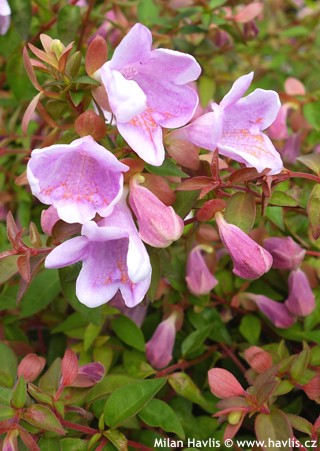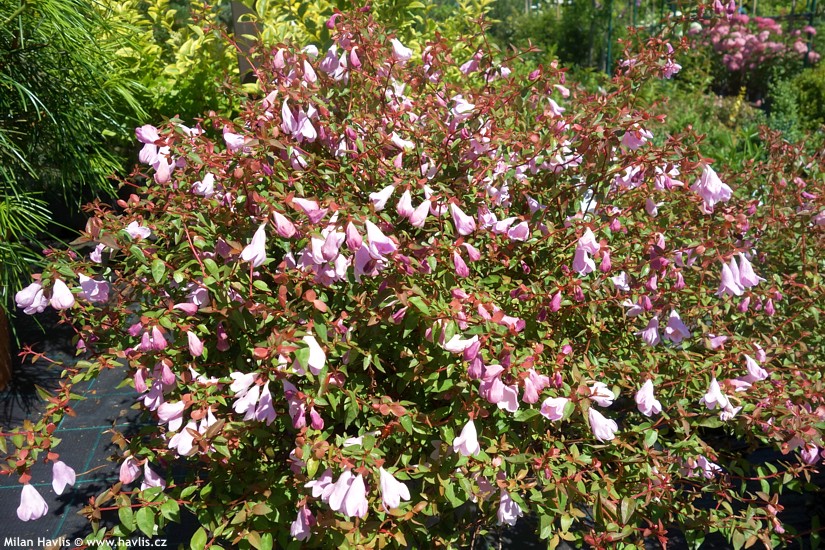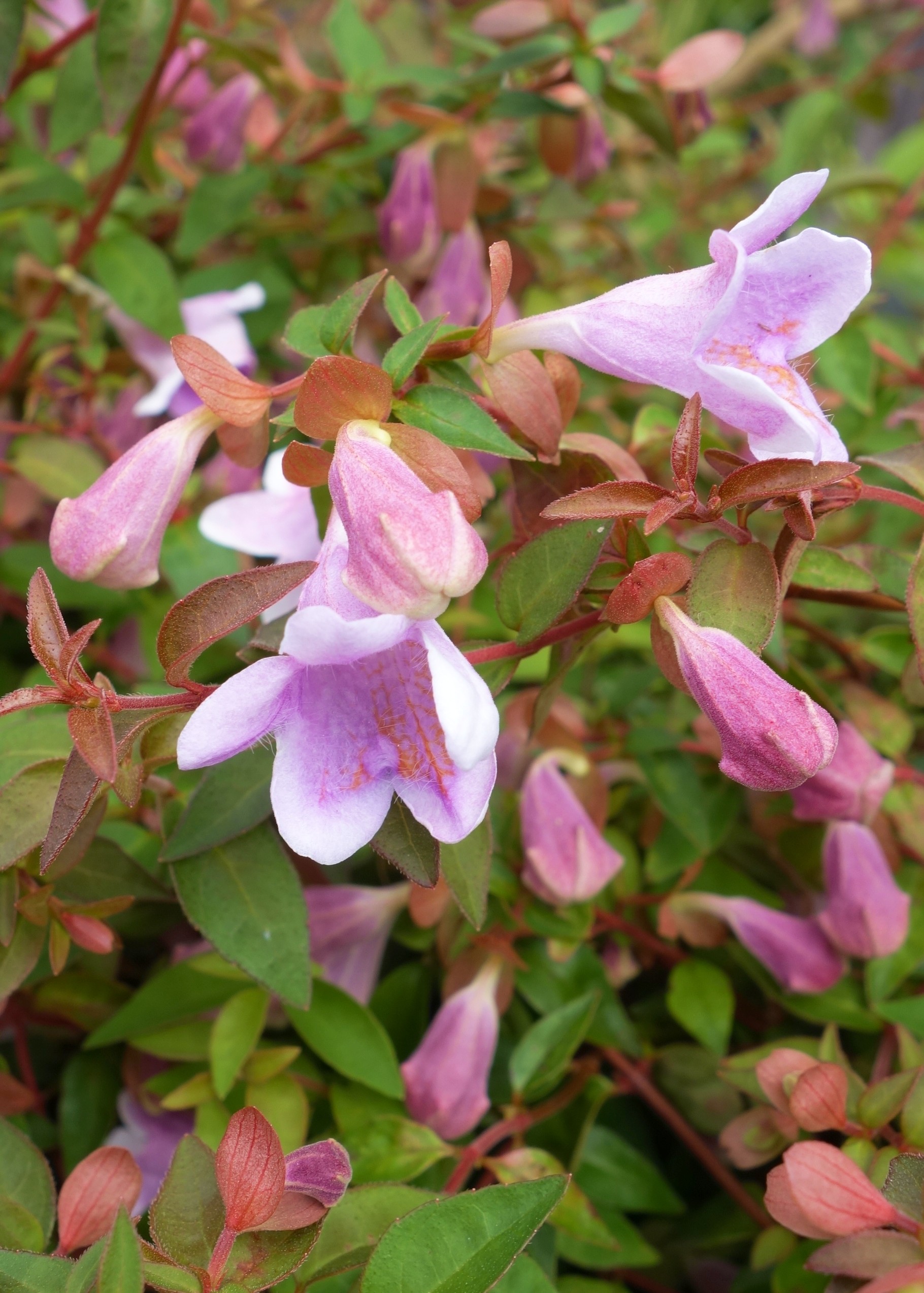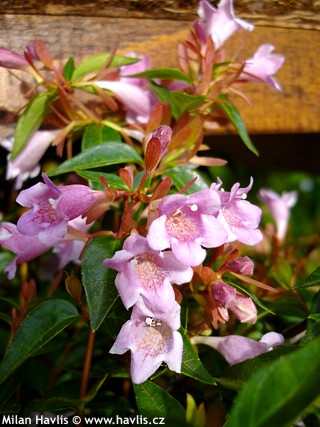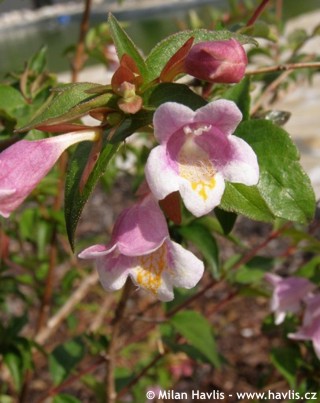Abelia ('Lynn') PINKY BELLS™ abelia
Abelia
Looking for the most spectacular trees and shrubs with eye-catching flowering one tends to forget the smaller ones, which are no less diligent or beautiful. Take abelias for instance. These small, elegant shrubs start blooming in June and continue tirelessly throughout the summer until October.
PINKY BELLS™ abelia is a result of cross pollination of older abelia varieties Bumblebee and Little Richard. The new plant not only has a much more compact and bushy habit, it also produces possibly the largest flowers so far bred in the abelia world, they can perhaps be compared to Engler’s abelia in colour and shape but are still a little bigger. They are light purple pink outside and a little deeper pink inside the throat which is moreover decorated with deep orange veins, broadly funnel-shaped, 2-3 cm long, and open from rich purple pink buds. Leaves are 2-3 cm long, pointed, not too glossy, mid green in summer and burgundy red in autumn and winter. They are semi-evergreen falling down only when the temperature drops below about -15°C for more than a few days. Young twigs are burgundy red. Bred and patented by Timothy D.Wood from Michigan, USA, in 2009. PP20604.
In warmer climates this shrub is relatively vigorous and can reach about 1 meter tall. In our zone 6 it is expected to grow some 60 cm tall and about a meter wide. Pruning is not necessary but can be done in early spring.
Abelia is very soil adaptable. We trialed both very poor and dry, and heavy clay-based soil and it got used to both situations. Still, for best results grow it in average, reasonably drained soil of any pH, in full sun or in limited shade. It is hardy to about -24°C (USDA zone 6), or zone 5 with good winter protection.
Last update 04-08-2016

































